2018 ACISTE Annual Conference
2018 Speakers and Presenters
Keynote Presentation: Yvonne Kason, MD, MEd, CCFP, FCFP
Defining Spiritually Transformative Experiences
Abstract
Dr. Yvonne Kason first coined the phrase “Spiritually Transformative Experiences” (STEs) in 1994—further defining them in her book, Farther Shores (2008)—to describe how NDEs and other mystical and paranormal experiences tend to transform the experiencer, changing them in a more spiritual direction. In this presentation, Dr. Kason will share the stories of her own four near-death experiences, her kundalini awakening, and “calling” mystical experience, which changed the course of her life—prompting her to research a wide range of Spiritually Transformative Experiences, and ultimately to become the first Canadian medical doctor to specialize her practice in the counseling of patients who had diverse STEs. Dr. Kason will outline how she divides STEs into five major categories, each with several sub-types, which will be described in detail in this presentation: mystical experiences, kundalini/spiritual energy awakenings, psychic experiences, near-death experiences and other death-related STEs, and inspired creativity. She will describe the importance of accurate definitions for STEs in order to minimize the mislabeling of STE experiencers, as happens all too frequently today. She will describe how all STEs tend to transform the experiencer, initiating or accelerating a long-term process of spiritual transformation of consciousness. Dr. Kason concludes that STEs, once understood and integrated, can be a powerful catalyst for spiritual growth and personal healing.Presenter Bio
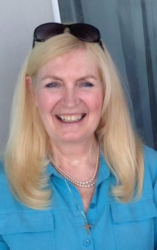 Dr. Yvonne Kason MD, MEd, CCFP, FCFP, is an internationally renowned medical expert on Near-Death Experiences, Kundalini, and Spiritually Transformative Experiences, (STEs). She has 38 years of experience researching and counseling persons with STEs, in a variety of university and clinical settings. Dr. Kason first coined the phrase “Spiritually Transformative Experiences” in her groundbreaking 1994 book, A Farther Shore, and elaborated on her personal and clinical experience with STEs in Farther Shores (2000, 2008). This term has now been adopted by many of the foremost researchers in the field. She was the first Canadian medical doctor to specialize her practice on the research and counseling of patients who had near-death experiences, kundalini, and other mystical and paranormal experiences. She is the author of four books, and has more than 20 published articles.
As a pioneer in this field, she co-founded the Spirituality in Health Care Network in 2000, and chaired the University of Toronto’s first international conference on Spirituality and Health Care in 2002. She founded the Spiritual Emergence Research and Referral Clinic in 1992, and was Canadian coordinator for the Spiritual Emergence Network for many years. Dr. Kason was a co-founder of the Kundalini Research Network (KRN) in 1990, and longtime KRN board member.
Dr. Kason retired from medical practice following a traumatic brain injury in November 2003. Following a spontaneous brain healing in February 2016, a miracle of brain neuroplasticity, Dr. Kason has now resumed writing and making professional and media presentations regarding her extensive personal and professional experience with NDEs and STEs. She is also a mother and devoted long time practitioner of yoga meditation. She divides her time between living in Toronto, Canada, and Encinitas, California.
Dr. Yvonne Kason MD, MEd, CCFP, FCFP, is an internationally renowned medical expert on Near-Death Experiences, Kundalini, and Spiritually Transformative Experiences, (STEs). She has 38 years of experience researching and counseling persons with STEs, in a variety of university and clinical settings. Dr. Kason first coined the phrase “Spiritually Transformative Experiences” in her groundbreaking 1994 book, A Farther Shore, and elaborated on her personal and clinical experience with STEs in Farther Shores (2000, 2008). This term has now been adopted by many of the foremost researchers in the field. She was the first Canadian medical doctor to specialize her practice on the research and counseling of patients who had near-death experiences, kundalini, and other mystical and paranormal experiences. She is the author of four books, and has more than 20 published articles.
As a pioneer in this field, she co-founded the Spirituality in Health Care Network in 2000, and chaired the University of Toronto’s first international conference on Spirituality and Health Care in 2002. She founded the Spiritual Emergence Research and Referral Clinic in 1992, and was Canadian coordinator for the Spiritual Emergence Network for many years. Dr. Kason was a co-founder of the Kundalini Research Network (KRN) in 1990, and longtime KRN board member.
Dr. Kason retired from medical practice following a traumatic brain injury in November 2003. Following a spontaneous brain healing in February 2016, a miracle of brain neuroplasticity, Dr. Kason has now resumed writing and making professional and media presentations regarding her extensive personal and professional experience with NDEs and STEs. She is also a mother and devoted long time practitioner of yoga meditation. She divides her time between living in Toronto, Canada, and Encinitas, California.Main Session: Kelly Yi, PhD
Multi-Dimensional Psychology - A New Psychological Model for Integrating Spiritually Transformative Experiences
Abstract
Multi-Dimensional Psychology is a new psychological model that is based on data and principles from consciousness studies, empirically supported psychological treatments, and contemplative interventions. Developed by Dr. Kelly Yi, he will review some key aspects of the model including the data that supports the metaphysical assumptions of the approach. How to use Multi-Dimensional Psychology to aid individuals in integrating spiritually transformative experiences will be discussed in depth.Presenter Bio
 Dr. Kelly Yi is a Licensed Psychologist and Associate Chair of the PsyD Program at The Institute of Transpersonal Psychology at Sofia University. He also is a clinical supervisor at Stanford/The Pacific Graduate School of Psychology's empirically-based university clinic. He studied the psychology of religion and comparative religious/spiritual experiences as an undergraduate at UC Santa Barbara. In graduate school, he conducted original doctoral research on long-term mindfulness training and well being, examining the experiences of long-term practitioners and teachers. He is a past post-doctoral Summer Research Fellow of The Mind and Life Institute, as well as a research assistant on the Mind and Life Institute's leading edge Cultivating Emotional Balance project. He is a certified Cultivating Emotional Balance teacher. Dr. Yi has specializations working with spiritual and religious issues, addictions, trauma, ethnic identity and cultural issues, anxiety, depression, stress, relationships, and meaning of life issues. He is currently writing a book on Multi-Dimensional Psychology.
Dr. Kelly Yi is a Licensed Psychologist and Associate Chair of the PsyD Program at The Institute of Transpersonal Psychology at Sofia University. He also is a clinical supervisor at Stanford/The Pacific Graduate School of Psychology's empirically-based university clinic. He studied the psychology of religion and comparative religious/spiritual experiences as an undergraduate at UC Santa Barbara. In graduate school, he conducted original doctoral research on long-term mindfulness training and well being, examining the experiences of long-term practitioners and teachers. He is a past post-doctoral Summer Research Fellow of The Mind and Life Institute, as well as a research assistant on the Mind and Life Institute's leading edge Cultivating Emotional Balance project. He is a certified Cultivating Emotional Balance teacher. Dr. Yi has specializations working with spiritual and religious issues, addictions, trauma, ethnic identity and cultural issues, anxiety, depression, stress, relationships, and meaning of life issues. He is currently writing a book on Multi-Dimensional Psychology.Main Session: Marie Grace Brook, PhD, LCSW, ACMHP, ACSGC
Recovering Balance After the Big Leap: Overcoming Challenges in Integrating Spiritually Transformative Experiences (STEs)
Abstract
In the aftermath of spiritually transformative experiences (STEs), experiencers (STErs) have sometimes reported prolonged integration processes that were challenging. STE was defined as a discrete experience of an altered state of consciousness that brings about a profound transformation in the spiritual identity and life expression of the experiencer. These include experiences such as near-death experiences (NDEs), kundalini awakenings, religious conversions, and mystical experiences. Clinicians have suggested strategies helpful to STErs in the integration process, but to date those suggestions have not been examined empirically. The purpose of this study was to assess the extent to which STErs themselves endorsed those suggestions. The Integration of Spiritually Transformative Experiences Inventory (ISTEI) was created by the researcher based on seasoned clinicians’ suggestions of 84 practices, habits, and behaviors that can be helpful. Participants were recruited through online STE networks and social media. Out of 431 respondents who began the ISTEI, 245 met criteria for integration as assessed by the 5-Item Mental Health Inventory, and transformation as assessed by the Posttraumatic Growth Inventory-Short Form. Participants rated 80 of the 84 practices, habits, and behaviors as helpful. Twelve practices were rated by all participants as essential (4.0 in a Likert scale of 1-4) including (a) practicing compassion, humility, forgiveness, honesty, and gratitude; (b) practicing self-awareness and exploring the unconscious; and (c) supportive practices such as finding serene environments to allow expansion of awareness to unfold, reading spiritual literature, praying, and sharing with another person. A key finding was that across a variety of STEs, there was consistency regarding the integration practices rated as helpful, and that psychiatric care and medication were usually not found to be helpful, and even contraindicated for persons integrating STEs (p < .001). Correlation tests between helpfulness and frequency of use showed that STErs gravitated intuitively to what was the most useful for them (p < .0001). Both STErs themselves and the healthcare providers who serve them can use these findings to facilitate STErs’ post-STE integration processes.Presenter Bio
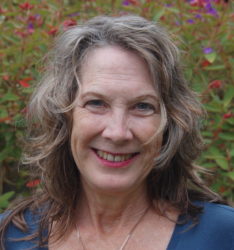 Marie Grace Brook, PhD, LCSW, ACMHP, ACSGC holds a BA from Duke University, MSW from Denver University, Masters Certificate in Spiritual Direction from Fordham University, and PhD from Institute of Transpersonal Psychology. She has worked as a mountain guide, healing artist (Rolfer and craniosacral therapist), hospice social worker, graduate school adjunct teacher, spiritual director/supervisor and researcher. Her papers have been published in NASW’s Children & Schools, SDI’s Presence, ITA’s International Journal of Transpersonal Studies, and ProQuest Dissertations. In 2015 and 2016, she presented research studies at the American Psychological Association Div. 36 Mid-Year Conference and ACISTE in the USA, at the International Congress for Complementary and Integrative Medicine Research in South Korea, at the European Transpersonal Association Conference in Italy, at the International Transpersonal Conference for Education and Humanities in Indonesia, and at the International Transpersonal Psychology Conference in Brazil. Her recently published research inquires into recommended methods of integrating spiritually transformative experiences from a survey of people who have integrated such experiences. Marie lives in Santa Cruz, has a private practice in spiritual direction and psychotherapy specializing in supporting people integrating spiritually transformative experiences, and hosts Jasmine Garden Oasis Retreat House with her husband, Peter.
Marie Grace Brook, PhD, LCSW, ACMHP, ACSGC holds a BA from Duke University, MSW from Denver University, Masters Certificate in Spiritual Direction from Fordham University, and PhD from Institute of Transpersonal Psychology. She has worked as a mountain guide, healing artist (Rolfer and craniosacral therapist), hospice social worker, graduate school adjunct teacher, spiritual director/supervisor and researcher. Her papers have been published in NASW’s Children & Schools, SDI’s Presence, ITA’s International Journal of Transpersonal Studies, and ProQuest Dissertations. In 2015 and 2016, she presented research studies at the American Psychological Association Div. 36 Mid-Year Conference and ACISTE in the USA, at the International Congress for Complementary and Integrative Medicine Research in South Korea, at the European Transpersonal Association Conference in Italy, at the International Transpersonal Conference for Education and Humanities in Indonesia, and at the International Transpersonal Psychology Conference in Brazil. Her recently published research inquires into recommended methods of integrating spiritually transformative experiences from a survey of people who have integrated such experiences. Marie lives in Santa Cruz, has a private practice in spiritual direction and psychotherapy specializing in supporting people integrating spiritually transformative experiences, and hosts Jasmine Garden Oasis Retreat House with her husband, Peter.Main Session: Jan Holden, EdD
After-Death Communication and the Biblical Fruits of the Spirit: An Online Survey
Abstract
In after-death communication (ADC), a living individual experiences direct contact with a deceased entity. Although research has shown such experiences to be common and overwhelmingly beneficial, clients in counseling—particularly conservative Christian clients—have expressed reluctance, distress, rejection, and/or avoidance of such experiences, considering them evil or "of the Devil." Although the Bible cites necromancy—conjuring the spirits—to be "not of the Spirit," the same passage goes on to provide a litmus test for determining Holy Spirit as the source of phenomena: whether they yield the fruits of love, joy, peace, patience, kindness, goodness, faithfulness, and self-control. My research team conducted an Internet survey of ADC experiencers. Participants were 164 adults ranging from 21 to 86 years of age, with a mean age of 57.7; 85.4% female, 14.0% male, and 0.06% genderqueer/non-binary; 93.3% White, 0.6% African American/Black, 1.2% Asian, and 4.9% multiracial/other; and 92.7% representing disproportionately every US geographic region, and 7.3% living outside the US. With their only or self-identified most impactful ADC in mind, they indicated the extent to which the ADC changed their sense of each of the fruits, with opportunity to provide narrative explanation of any changes. Results revealed answers skewed strongly in the direction of increasing their sense of the fruits, with only 0.4% of responses indicating any lasting decrease of a fruit. We discuss limitations, including a religiously/spiritually liberal-leaning sample; criteria for concluding whether the results indicate that ADC is "of the Holy Spirit;" suggestions for future research that our results seem strongly to warrant; and implications for counselors working with clients who report ADC and for religious scholars considering the spiritual source of ADC.Presenter Bio
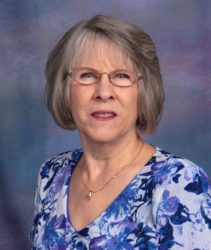 Since completing her EdD in 1988, Janice Miner Holden has been a member of the University of North Texas Counseling Program faculty where she is currently professor of Counseling and chair of the Department of Counseling and Higher Education. Beginning with her doctoral dissertation, Jan's primary research focus has been the counseling implications of near-death experiences, after-death communication, and other transpersonal experiences—those that transcend the usual personal limits of space, time, and/or identity. In this research area, she has published over 35 refereed journal articles, and over 100 national and international presentations. She served as lead editor of the 2009 Handbook of Near-Death Experiences: Thirty Years of Investigation, and she co-edited the Association for Spiritual, Ethical, and Religious Values in Counseling's (ASERVIC's) 2017 ‘Connecting Soul, Spirit, Mind, and Body: A Collection of Spiritual and Religious Perspectives and Practices in Counseling.’ She is a Texas LPC-Supervisor, a National Certified Counselor, and an American Center for the Integration of Spiritually Transformative Experiences (ACISTE) Certified Mental Health Professional. For her career-long research on and advocacy for people who have had transpersonal experiences, Jan was awarded the ASERVIC 2013 Research Award and the American Counseling Association's 2015 Gilbert and Kathleen Wrenn Award for a Humanitarian and Caring Person.
Since completing her EdD in 1988, Janice Miner Holden has been a member of the University of North Texas Counseling Program faculty where she is currently professor of Counseling and chair of the Department of Counseling and Higher Education. Beginning with her doctoral dissertation, Jan's primary research focus has been the counseling implications of near-death experiences, after-death communication, and other transpersonal experiences—those that transcend the usual personal limits of space, time, and/or identity. In this research area, she has published over 35 refereed journal articles, and over 100 national and international presentations. She served as lead editor of the 2009 Handbook of Near-Death Experiences: Thirty Years of Investigation, and she co-edited the Association for Spiritual, Ethical, and Religious Values in Counseling's (ASERVIC's) 2017 ‘Connecting Soul, Spirit, Mind, and Body: A Collection of Spiritual and Religious Perspectives and Practices in Counseling.’ She is a Texas LPC-Supervisor, a National Certified Counselor, and an American Center for the Integration of Spiritually Transformative Experiences (ACISTE) Certified Mental Health Professional. For her career-long research on and advocacy for people who have had transpersonal experiences, Jan was awarded the ASERVIC 2013 Research Award and the American Counseling Association's 2015 Gilbert and Kathleen Wrenn Award for a Humanitarian and Caring Person.Main Session: Ted Esser
Abstract
Presenter Bio
Main Session: Edy Nathan, MA, LCSWR, CST
Building Trust When Grief & Trauma Are Present: How STEs Alter the Soul
Abstract
In this interactive presentation, the focus will be on creative methods that help clients acknowledge and speak to their grief and trauma. These taboo subjects tend to keep folks who have had spiritually transformative experiences quiet. When grief gets acknowledged within the therapeutic room, trust for the process begins to form. Building trust when it often seems that the world is against you is a task that begs to be part of the therapist’s narrative. You will learn effective methods to move into the depths of the client’s pain through projective techniques that are easily accessible to all. Finding the fluidity and balance in your own process allows for the same with your client.Presenter Bio
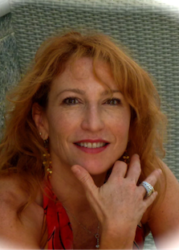 Edy Nathan, MA, LCSW, CST is a licensed psychotherapist and certified sex therapist with over 20 years of experience specializing in the integration of psychotherapy and the world of spirituality. She holds a Masters from New York University and Fordham. She has post-graduate training from the Ackerman Institute for Family Therapy, The Gestalt Center, and the Jungian Institute. She is a certified EMDR practitioner, regression therapist, and certified Hypnotherapist. In her expertise as a grief therapist, she interweaves her formal training as a psychotherapist with her views on trauma, abuse, and death. She believes that everyone experiences grief throughout their lives. Grief is not just about the death of a loved one, but the losses we experience in life. Having trained with renowned past life therapy regressionist, Brian Weiss, MD, spiritual leader Thomas Moore, PhD, and shamanic healer, Hank Wesselman, PhD, Edy draws on her training to create a wide repertoire of tools that help people learn to live with their grief.
Edy Nathan, MA, LCSW, CST is a licensed psychotherapist and certified sex therapist with over 20 years of experience specializing in the integration of psychotherapy and the world of spirituality. She holds a Masters from New York University and Fordham. She has post-graduate training from the Ackerman Institute for Family Therapy, The Gestalt Center, and the Jungian Institute. She is a certified EMDR practitioner, regression therapist, and certified Hypnotherapist. In her expertise as a grief therapist, she interweaves her formal training as a psychotherapist with her views on trauma, abuse, and death. She believes that everyone experiences grief throughout their lives. Grief is not just about the death of a loved one, but the losses we experience in life. Having trained with renowned past life therapy regressionist, Brian Weiss, MD, spiritual leader Thomas Moore, PhD, and shamanic healer, Hank Wesselman, PhD, Edy draws on her training to create a wide repertoire of tools that help people learn to live with their grief.Main Session: Tony Benning, MBChB, PGDIP, MSC, MRCPsych (UK), FRCPC, PhD
When Kundalini Shows Up in a Psychiatric Clinic: Diagnostic Delays and Clinical Conundrums
Abstract
This presentation will outline the case of a 40 year old lady who was referred by her family doctor to a hospital based general psychiatric outpatient clinic. On the face of it she suffered from anxiety but on the second meeting with the psychiatrist it became clear that she was going through a spiritual emergency, specifically a kundalini awakening or what Bentov called the "physio-kundalini syndrome". After a presentation of a general outline of the case the presenter will go onto reflect on the possible reasons for the delay in diagnosis. There will also be a discussion of some of the subsequent therapeutic work that was undertaken in the psychiatric clinic and the clinical dilemmas that arose therein.Presenter Bio
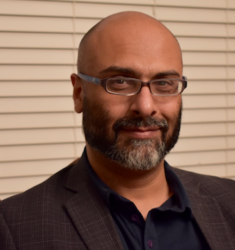 Tony Benning graduated from Manchester Medical School in 1995 and undertook psychiatric training in the UK and Australia. He practices general adult psychiatry in Maple Ridge, BC, Canada, and is a clinical instructor in the faculty of medicine at the University of British Columbia in Vancouver, BC. Dr. Benning’s interests include cultural psychiatry, exceptional human experiences, indigenous mental health, and the interface between psychiatry and religion/spirituality. He recently completed doctoral studies at the California Institute of Integral Studies in San Francisco, CA.
Tony Benning graduated from Manchester Medical School in 1995 and undertook psychiatric training in the UK and Australia. He practices general adult psychiatry in Maple Ridge, BC, Canada, and is a clinical instructor in the faculty of medicine at the University of British Columbia in Vancouver, BC. Dr. Benning’s interests include cultural psychiatry, exceptional human experiences, indigenous mental health, and the interface between psychiatry and religion/spirituality. He recently completed doctoral studies at the California Institute of Integral Studies in San Francisco, CA.Main Session: William Peters, MA, MEd. & Michael Kinsella, PhD
The Shared Death Experience: Profound Healing and Transformation for the Dying and Their Loved Ones
Abstract
Explore the Shared Death Experience (SDE), a profound end-of-life phenomenon in which those attending to the dying report accompanying them to a world beyond this human life. This presentation will review the essential elements of the SDE, its transformative healing benefits, and methods that support experiencers through their process of integration. Highlighting the Shared Crossing Research Initiative’s work with over 200 case studies, this presentation will review current understandings of how SDEs occur and their potential for therapeutic growth. Professionals will gain an understanding of the SDE and other end-of-life experiences that will allow them to recognize these transformative experiences and assist others in receiving and processing them. Special attention will be given to addressing how the SDE reduces grief for surviving caregivers and loved ones. This presentation includes a review of the research, video case studies, a guided visualization, and discussion.Presenter Bio
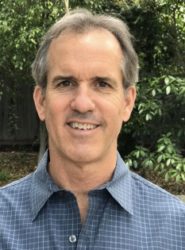 William Peters, M.A., M.Ed., is the founder of the Shared Crossing Project whose mission is to raise awareness and educate people about the profound and healing experiences that are possible for the dying and their loved ones. As the director of the Shared Crossing Research Initiative, William and his team collect and study extraordinary end-of-life experiences (shared crossings). He has developed methods to facilitate these shared crossings and to assist experiencers in meaningfully integrating their experiences. William conducts workshops and presents nationally on his research. He is a licensed psychotherapist at the Family Therapy Institute in Santa Barbara where he specializes in end-of-life counseling as a means toward psycho-spiritual evolution. William has worked as a Zen Hospice volunteer and his work is informed by his two near death experiences (SDEs) and a variety of shared death experiences as hospice worker.
William Peters, M.A., M.Ed., is the founder of the Shared Crossing Project whose mission is to raise awareness and educate people about the profound and healing experiences that are possible for the dying and their loved ones. As the director of the Shared Crossing Research Initiative, William and his team collect and study extraordinary end-of-life experiences (shared crossings). He has developed methods to facilitate these shared crossings and to assist experiencers in meaningfully integrating their experiences. William conducts workshops and presents nationally on his research. He is a licensed psychotherapist at the Family Therapy Institute in Santa Barbara where he specializes in end-of-life counseling as a means toward psycho-spiritual evolution. William has worked as a Zen Hospice volunteer and his work is informed by his two near death experiences (SDEs) and a variety of shared death experiences as hospice worker.
 Michael Kinsella, Ph.D. is the chief researcher for the Shared Crossing Testimonial Project. He is a lecturer of Religion at Central Michigan University, where he specializes in non-ordinary experiences and the religious dimensions of death and
dying. His most recent publications have appeared in the Journal of the American Academy of Religion and in Method and Theory in the Study of Religion. Michael is currently working on his second book, which explores the sociocultural influence of near-death experiences.
Michael Kinsella, Ph.D. is the chief researcher for the Shared Crossing Testimonial Project. He is a lecturer of Religion at Central Michigan University, where he specializes in non-ordinary experiences and the religious dimensions of death and
dying. His most recent publications have appeared in the Journal of the American Academy of Religion and in Method and Theory in the Study of Religion. Michael is currently working on his second book, which explores the sociocultural influence of near-death experiences.Main Session: R. Craig Hogen, PhD
Afterlife Communication Procedures Being Used Successfully by Psychotherapists
Abstract
Afterlife communication is the most effective way to heal grief from the passing of a loved one. One method has a 98% success rate in clients’ having afterlife communications, with SUDS scale reductions from pre-session ratings of 10 to post-session ratings of 0 to 3. Today, there are at least 16 methods being used to help people have afterlife communications. Three are being used by hundreds of psychotherapists in their offices, and a fourth is suggested for use with clients. In this presentation, Dr. Craig Hogan will give an overview of the methods being used successfully today to help clients have afterlife communications with the people for whom they are grieving. Dr. Hogan will then describe in detail two afterlife communication procedures psychotherapists are using successfully with their clients.Presenter Bio
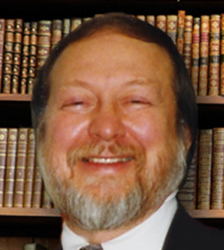 R. Craig Hogan, Ph.D., is the president of the Afterlife Research and Education Institute, Inc. He is the author of Your Eternal Self, presenting the scientific evidence that the mind is not confined to the brain, the afterlife is a reality, people’s minds are linked, and the mind affects the physical world. The book is hailed as “number one from the standpoint of offering the reader the full gamut of phenomena supporting the survival hypothesis in clear and concise language” (Michael Tymn, managing editor, The Searchlight) and “an eye-opening look at the pseudo natural and everything related to the human mind—highly recommended for anyone into the science beyond the mundane world” (“Reviewer’s Choice,” Midwest Book Review, June 2008).
Dr. Hogan co-authored Induced After-Death Communication: A New Therapy for Healing Grief and Trauma with Allan Botkin, PsyD, and Repair and Reattachment Grief Therapy with Rochelle Wright, MS. He is the editor of Afterlife Communication: 16 Proven Methods, 85 True Accounts and of New Developments in Afterlife Communication and New Developments in Afterlife Communication. He developed the Self-Guided Afterlife Communication method, freely available on the Internet, that has been used by thousands of people to communicate with their loved ones in the afterlife.
He co-authored the Personal Styles Inventory, based on Carl Jung’s work, wrote two books on business writing, co-authored a book training supervisors in schools to more effectively work with teachers, and developed several Web sites devoted to business writing and spiritual understanding.
He has been a professor of business communications at three universities, curriculum and training administrator at two universities and a medical school, and director of his own online business writing school.
R. Craig Hogan, Ph.D., is the president of the Afterlife Research and Education Institute, Inc. He is the author of Your Eternal Self, presenting the scientific evidence that the mind is not confined to the brain, the afterlife is a reality, people’s minds are linked, and the mind affects the physical world. The book is hailed as “number one from the standpoint of offering the reader the full gamut of phenomena supporting the survival hypothesis in clear and concise language” (Michael Tymn, managing editor, The Searchlight) and “an eye-opening look at the pseudo natural and everything related to the human mind—highly recommended for anyone into the science beyond the mundane world” (“Reviewer’s Choice,” Midwest Book Review, June 2008).
Dr. Hogan co-authored Induced After-Death Communication: A New Therapy for Healing Grief and Trauma with Allan Botkin, PsyD, and Repair and Reattachment Grief Therapy with Rochelle Wright, MS. He is the editor of Afterlife Communication: 16 Proven Methods, 85 True Accounts and of New Developments in Afterlife Communication and New Developments in Afterlife Communication. He developed the Self-Guided Afterlife Communication method, freely available on the Internet, that has been used by thousands of people to communicate with their loved ones in the afterlife.
He co-authored the Personal Styles Inventory, based on Carl Jung’s work, wrote two books on business writing, co-authored a book training supervisors in schools to more effectively work with teachers, and developed several Web sites devoted to business writing and spiritual understanding.
He has been a professor of business communications at three universities, curriculum and training administrator at two universities and a medical school, and director of his own online business writing school.Breakout Session: Peggy Levinson, LCSW, LMFT
Past Life and Metaphysical Concepts for Personal Growth
Summary
Join us for a special seminar as Peggy Levinson, LCSW, shares with you how you can uncover memories from your past lives. Using a technique called Past Life Regression. Peggy will guide you through the process of recalling these memories located deep inside your unconscious mind. She will explain what past life regression is and how it works, and discuss how your past lives may be impacting you right now in your current life. She will also discuss with you a technique called Quantum Healing Hypnosis Technique where we contact our subconscious to receive answers to questions we may have about ourselves and the life we are living. Peggy has studied Present and Past Life Regression Therapy with Dr. Brian Weiss, author of Many Lives, Many Masters, since 2013, as well as Quantum Healing Hypnosis Technique with Dolores Cannon. She is very excited about offering this didactic and experiential seminar. We will explore deep states of relaxation and metaphysical approaches that can help get to the root cause of current issues that originated in the past. We will expand our focus to further explore the healing potential of our Subconscious (or Higher Self or Source) that contains the answers to any questions we may have about ourselves. Many times we have an experience of an impactful situation in our past that keeps getting triggered in our present adult lives, affecting us emotionally, physically, and/or spiritually. In this workshop I will be guiding you to gain a better understanding of these issues, which have their origin early in this life or in a past life. This will involve your experiencing a short hypnotic regression where you can recall your own present and past life experiences.Presenter Bio
 Peggy Levinson, LCSW, LMFT, is a clinical member of the Academy of Certified Social Workers and the American Association of Marriage and Family Therapists. She received a BS in Psychology from St. Louis University in 1966 and an MSW from Smith College in 1968. In 1976 she completed a three-year training program in Gestalt Therapy in Kansas City and in 1983 completed a three-year post-graduate training program in family therapy at the Menninger Foundation. Subsequently she has pursued education in integrative therapy. This includes mind-body training at the Herbert Benson Institute at Harvard University, training in hypnosis and hypnotherapy at UCLA with Dr. Mark Schoen, past-life hypnotic training with Dr. Brain Weiss and training in Quantum Healing Hypnosis Technique (QHHT) with Dolores Cannon.
Peggy Levinson, LCSW, LMFT, is a clinical member of the Academy of Certified Social Workers and the American Association of Marriage and Family Therapists. She received a BS in Psychology from St. Louis University in 1966 and an MSW from Smith College in 1968. In 1976 she completed a three-year training program in Gestalt Therapy in Kansas City and in 1983 completed a three-year post-graduate training program in family therapy at the Menninger Foundation. Subsequently she has pursued education in integrative therapy. This includes mind-body training at the Herbert Benson Institute at Harvard University, training in hypnosis and hypnotherapy at UCLA with Dr. Mark Schoen, past-life hypnotic training with Dr. Brain Weiss and training in Quantum Healing Hypnosis Technique (QHHT) with Dolores Cannon.Breakout Session: Lorraine Van Tuyl, PhD, CHT
How Spiritual Emergencies & Trauma are Transformed with Depth Hypnosis
Summary
Depth Hypnosis was created by Dr. Isa Gucciardi, Ph.D., and is an integrative therapeutic model that uses the umbrella of Transpersonal Psychology to unify its multiple streams of understanding, including traditional hypnotherapy, Buddhist Psychology, the catalytic processes of earth-based wisdom, energy medicine, and exposure therapy. Techniques used in Depth Hypnosis include meditations creating connection to experiences of higher self, insight inquiry, suggestion hypnosis, regression therapy, and removal of energetic interference. In essence, Depth Hypnosis is a comprehensive, soul retrieval technology that empowers clients and catalyzes their own self-healing potential. It teaches them how to access spiritual guidance and creative healing solutions that usually remain on the periphery of their conceptual minds and everyday consciousness. These resources lead them back to their inner wisdom and the root causes of suffering in order to transform them at their source (Gucciardi, 2004). Case examples and an experiential exercise will provide a taste of the transformative power of Depth Hypnosis, an integral part of Dr. Van Tuyl’s Soul Sanctuary Alchemy signature model, in alleviating moderate to clinical levels of anxiety, depression, and PTSD symptoms in as few as 4-8 sessions. http://www.depthhypnosispractitioners.com/wp-content/uploads/2017/01/Can-Depth-Hypnosis-Heal-Mood-Disorders-A-Pilot-Study.pdfPresenter Bio
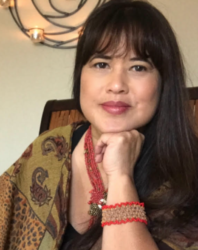 Loraine Van Tuyl, PhD, CHT, is a holistic psychologist, shamanic Depth Hypnosis practitioner, dynamic speaker, WomanSpeak leader, and award-winning author of Amazon Wisdom Keeper: a Psychologist’s Memoir of Spiritual Awakening.
She believes that the most effective way to heal our spiritually arid world is to excavate and support women’s deep wells of wisdom, dreams, and soul callings. Her two-decade devotion to awakening fierce, wise women has led to the empowerment of hundreds of trailblazers in psychology, holistic health, academia, the arts, social justice and entrepreneurship. She cultivates unwavering trust in their power, clarity, and intuitive ingenuity through her signature Soul Sanctuary Alchemy self-healing model.
Her work has appeared in Elephant Journal, Rebelle Society, and Byrdie. She has presented multiple times at the UC Berkeley Counseling Center and Native American Health Center, and has been interviewed by the Amazon Conservation Team, Divine Insight, All Things Therapy, Conscious Talk, Good Vibrations, Bringing Inspiration to Earth, and more.
Loraine Van Tuyl, PhD, CHT, is a holistic psychologist, shamanic Depth Hypnosis practitioner, dynamic speaker, WomanSpeak leader, and award-winning author of Amazon Wisdom Keeper: a Psychologist’s Memoir of Spiritual Awakening.
She believes that the most effective way to heal our spiritually arid world is to excavate and support women’s deep wells of wisdom, dreams, and soul callings. Her two-decade devotion to awakening fierce, wise women has led to the empowerment of hundreds of trailblazers in psychology, holistic health, academia, the arts, social justice and entrepreneurship. She cultivates unwavering trust in their power, clarity, and intuitive ingenuity through her signature Soul Sanctuary Alchemy self-healing model.
Her work has appeared in Elephant Journal, Rebelle Society, and Byrdie. She has presented multiple times at the UC Berkeley Counseling Center and Native American Health Center, and has been interviewed by the Amazon Conservation Team, Divine Insight, All Things Therapy, Conscious Talk, Good Vibrations, Bringing Inspiration to Earth, and more.
Breakout Session: Beth Christopherson, LCSW, CST
When the Spiritual Journey Gets Bumpy: Options for Shifting to Calmness and Empowerment
Summary
Spiritually transformative experiences (STEs) can result in many positive aftereffects, such as less fear of death, greater compassion for others, and an increased sense of purpose. (Noyes, Fenwick, Holden & Christian, 2009). However, research by King et al. (2013) has also shown that people who are spiritual but not religious have higher rates of generalized anxiety and other anxiety disorders, compared with those who identify as religious or neither spiritual nor religious. Even STEs that were perceived as positive by the experiencer can nonetheless precipitate spiritual questions, uncertainties, and explorations that can result in a feeling of anxiety in some people. This presentation will examine four main guidelines intended to increase empowerment and calm and reduce anxiety for those who are exploring spiritually:- Acceptance of being a spiritual explorer
- Engaging in course-corrections when the journey brings more stress than empowerment
- Reframing the spiritual journey within the broader context of life, so that it is not all-consuming
- Identifying certainties in belief system to return to as a source for spiritual comfort and restoration, when the journey gets challenging or tiring
Presenter Bio
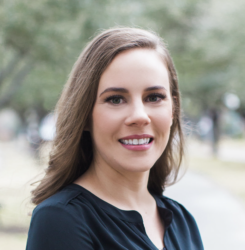 Beth Christopherson, LCSW, is a psychotherapist in private practice in Houston, TX. One of Beth’s focuses is on integrating spirituality, with a particular focus on afterlife beliefs, into her therapy practices. She is a frequent lecturer and presenter at universities and medical schools regarding mental health issues. In the summer of 2016, Beth developed and presented Ethically Integrating Afterlife Considerations into Therapy at the University of Houston Graduate College of Social Work. Beth has authored multiple articles published in Social Work Today, and she serves as an ad hoc reviewer for the Journal of Death and Dying.
Beth Christopherson, LCSW, is a psychotherapist in private practice in Houston, TX. One of Beth’s focuses is on integrating spirituality, with a particular focus on afterlife beliefs, into her therapy practices. She is a frequent lecturer and presenter at universities and medical schools regarding mental health issues. In the summer of 2016, Beth developed and presented Ethically Integrating Afterlife Considerations into Therapy at the University of Houston Graduate College of Social Work. Beth has authored multiple articles published in Social Work Today, and she serves as an ad hoc reviewer for the Journal of Death and Dying.Breakout Session: Kirsten Cameron
Psychotic or Spiritually Transformed? Issues in Diagnosing and Treating Clients Reporting STEs
Summary
Although Spiritually Transformative Experiences (STEs) are usually interpreted as highly positive by experiencers, the integration of these experiences is often very destabilizing. Despite advances in research in the field of STEs, and the recognition of religious or spiritual problems as a potential diagnosis by the American Psychological Association, therapist knowledge and training is still below acceptable standards for care. This lack, coupled with the fact that there are similarities between spiritually transformative experiences and the symptoms of psychosis, leaves experiencers with very justified fears of being pathologized by those they turn to for help. The result is that experiencers often do not disclose STEs to mental health professionals, and those that do often feel more depressed, confused, and misunderstood than before they disclosed. What can we, as therapists, do to avoid this treatment failure? While there are similarities between psychosis and STEs, it is vitally important that a therapist understand the differences, especially in diagnosis and formulating treatment plans. Suggested therapeutic processes will be also be reviewed for consideration.Presenter Bio
 Kirsten Cameron is currently completing her PhD in Integral and Transpersonal Psychology at the California Institute of Integral Studies. She also graduated summa cum laude with a B.A. in Psychology, and holds a Masters of Business Administration. An experiencer herself, Kirsten has worked with many spiritual seekers and those integrating spiritual experiences in her private practice as an executive and personal coach accredited through MBI Coaching. She is also a certified Master Hypnotherapist, and a graduate of the first ACISTE Peer Support facilitator training. More information can be found at
Kirsten Cameron is currently completing her PhD in Integral and Transpersonal Psychology at the California Institute of Integral Studies. She also graduated summa cum laude with a B.A. in Psychology, and holds a Masters of Business Administration. An experiencer herself, Kirsten has worked with many spiritual seekers and those integrating spiritual experiences in her private practice as an executive and personal coach accredited through MBI Coaching. She is also a certified Master Hypnotherapist, and a graduate of the first ACISTE Peer Support facilitator training. More information can be found atwww.Kirsten-Cameron.com.
Breakout Session: Chris Cole
The Mad Triangle: Identifying Trauma, Diversity, and Insight in Locations of Madness
Summary
What does an empowering, etiological model for extreme states look like, which neither pathologizes nor bypasses? Utilizing the “Mad Triangle” model—a dynamic, psychoeducational model for professionals, clients, and/or patients—individuals can self-select and make meaning in regard to their own experiences of madness. The three points of the Mad Triangle explore issues related to trauma, diversity, and personal insight, which allows for a broader discourse and the opportunity to focus more narrowly on salient issues pertaining to the individual expression of every case. Empowering outlets are explored for each point of the triangle: (1) holding space for post-traumatic growth in the context of trauma, (2) understanding the role of neurodiversity in the context of diversity, and (3) honoring spiritual emergence in the context of personal insight.Presenter Bio
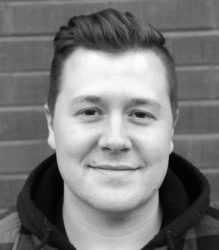 Chris Cole offers life coaching for any number of mental health conditions, specializing in bipolar disorder and spiritual emergence. He hosts the Waking Up Bipolar podcast and is the author of The Body of Chris: A Memoir of Obsession, Addiction, and Madness, inspired by his own journey of spiritual unfolding and mental health challenges. Chris operates from a heart-centered transpersonal orientation, gleaned from deep insight into his lived experience combined with years of service to those navigating the intimate terrain of transformative crisis. Learn more about Chris and his work at colecoaching.com.
Chris Cole offers life coaching for any number of mental health conditions, specializing in bipolar disorder and spiritual emergence. He hosts the Waking Up Bipolar podcast and is the author of The Body of Chris: A Memoir of Obsession, Addiction, and Madness, inspired by his own journey of spiritual unfolding and mental health challenges. Chris operates from a heart-centered transpersonal orientation, gleaned from deep insight into his lived experience combined with years of service to those navigating the intimate terrain of transformative crisis. Learn more about Chris and his work at colecoaching.com.Resources
Sign Up for our Newsletter
Assist ACISTE
PLEASE CONSIDER SUPPORTING OUR EFFORTS WITH YOUR GENEROUS DONATION!